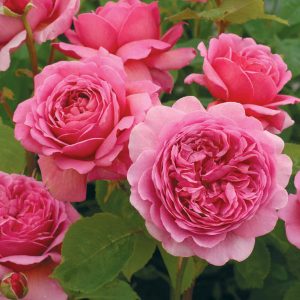La fleur au flacon – or Why Chanel No.5 is worth its weight in roses

Recently a number of U.K. food manufacturers have started to talk about “From farm to fork” the process they go through from harvesting their crops to you cooking and eating it. It’s their way of talking about the authenticity and quality of their products.
The French phrase ‘la fleur au flacon’ – the flower into the bottle – predates this and relates not to food but to perfume, and to the legendary Chanel No.5 in particular.
However the extraordinary attention to the detail involved in the production of Chanel No.5 helps explain both its uniqueness and perhaps its price too.
It’s a process, perhaps better called a recipe that starts in Joseph Mul’s fields near Pégomas. The fields have been in the Mul family since the early nineteen-hundreds and are where the Rosa centifolia or “hundred petal” roses grow. Their frilly, dishevelled heads often bow under their weight of all those petals but they produce a clear, sweet, honeyed scent. A scent that is as distinctive as the aroma from a French wine from a particular region is to a Master of Wine.
When the roses are in full bloom, often in late May, the entire fifty acres must be harvested in two weeks. Seventy pickers and four videurs have to cull over thirty tons of flowers. Each and every head picked in a particular way – “One finger over, one finger under, then twist! You can hear the snap” explains Mul.
Once harvested, the oils from the roses must be extracted quickly as once picked they start to ferment. Even after two or three minutes, the smell starts to subtly change.
Three to five hundred rose heads make a kilo and the videurs fill sacks of ten kilos apiece. These are then immediately loaded them onto a flatbed truck. Within an hour, the roses are delivered to an on-site factory.
The sacks of roses are transferred into a giant metal vat and workers use pitchforks to even out the piles before two thousand litres of hexane, a colourless liquid solvent is added and heated it to exactly sixty-eight degrees Celsius. The vat is reopened and the petal have changed from pink to brown.
From here the remaining liquid imbued with the essence of all those roses are turned into a waxy solid known perhaps surprisingly as concrete before being distilled in an absolute, a highly concentrated oil that goes directly into the perfume
And this is just the roses.
Each thirty-millilitre bottle of Chanel No. 5 contains the scent from a thousand Pégomas jasmine flowers, twelve Pégomas roses and a number of other carefully selected and prepared ingredients too.
Olivier Polge, Chanel’s head perfumer, or “nose,” has said with an unplanned reference to ‘from farm to fork’ “A living material gives you an identity that no synthetic can give. People think of perfume as something elusive, but I really like this feet-in-the-mud side to it.”